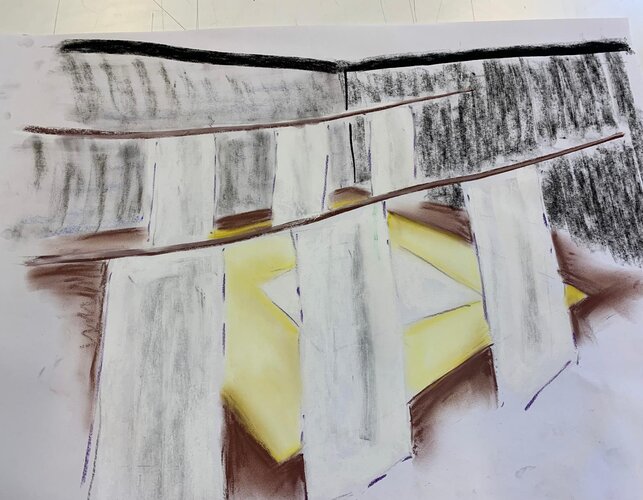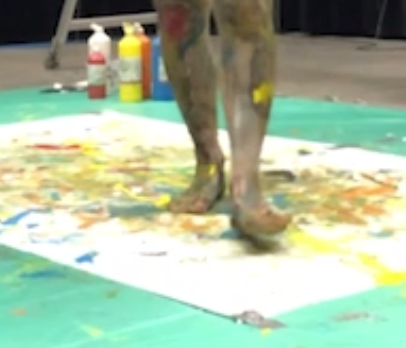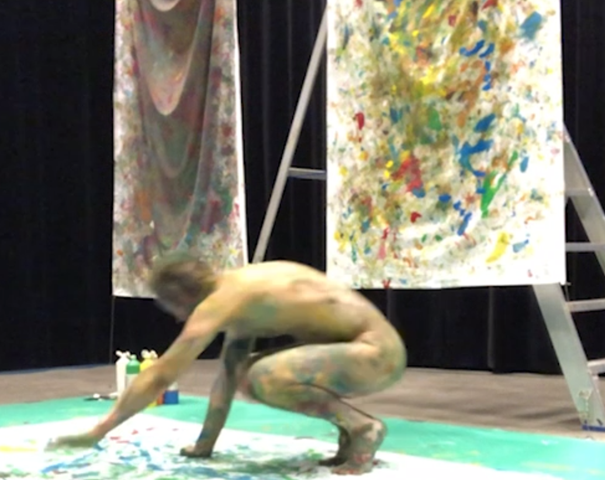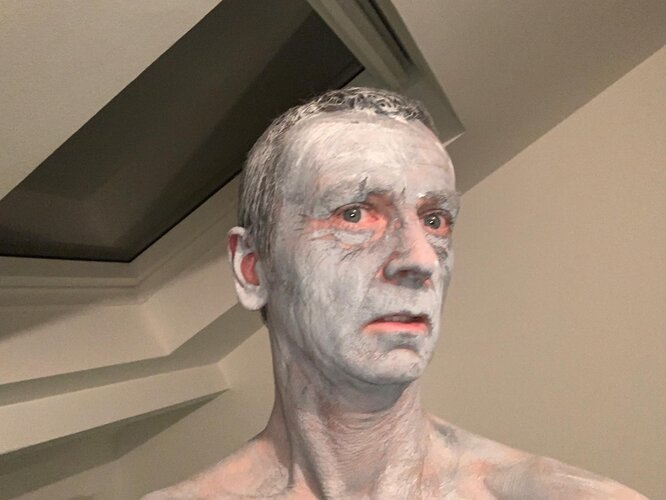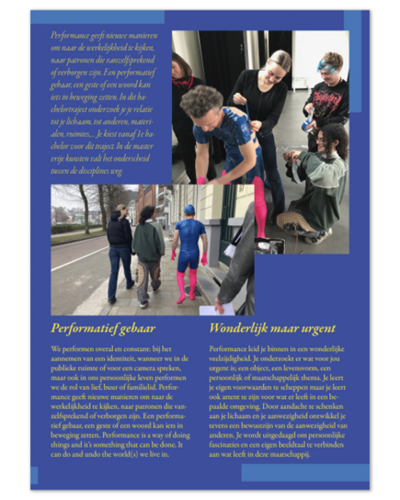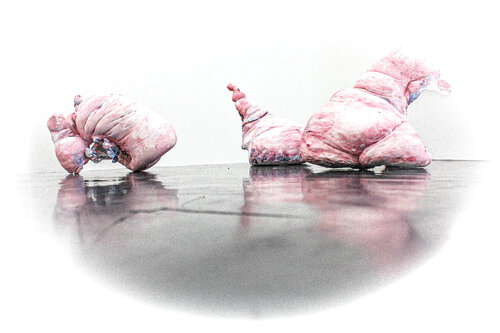Performance Reflextions#1
Performance Reflextions#1
The performance is a personal and poetic reflection on aging, vulnerability, and the relationship between the body, time, and art. I was deeply moved by the BBC radio composition The Evenings of Certain Lives, in which interviews with elderly people are interwoven with electronic sounds by Barry Bermange, Delia Derbyshire, and the BBC Radiophonic Workshop. This performance paints a fragile yet powerful portrait of the human condition through five existential themes.
Inspired by this sonic narrative, I—an emerging artist—explore the aging body and the tension between physical decline and a mind that refuses to yield to it. Where my body once moved with fluid grace, my movements are now fragmented and jerky, each limb moving at its own slow rhythm. Yet within these spontaneous motions lies an echo of former suppleness.
Each performance begins with a ritual: I remove my clothes and paint my entire body gray—a symbolic act that refers to impermanence, the earth, time, and death. My body becomes a medium that makes the transience of life tangible. Within this ritual act, I find beauty: the beauty of decay, of imperfection.
Dance and movement push my body toward physical exhaustion, which in turn impacts the creative process. This fatigue is translated into gestures on the canvas, with my body itself becoming a brush. Each stroke becomes a trace of struggle, but also of imagination and vitality. Despite the aging of my body, a playful, almost childlike energy remains. This reveals itself in vivid colors and spontaneous forms—a testament that creativity and life force do not vanish with age.
In my installation Reflections #1, this exploration takes its ultimate form. I perform eight times, using my naked body as a brush to create a painting on canvas. Each performance yields a new work, replacing a blank canvas within the installation. Once all eight performances are complete, the installation is finished. Each action is filmed as a record of these ephemeral yet meaningful moments.
The installation and performances are my way of exploring how beauty, strength, and vulnerability can coexist in an aging body. My work delves into the tension between physical decline and mental resilience, posing the question of whether the soul ever truly yields to time. Through ritual, paint, movement, and nudity, I choose not to conceal aging—but to celebrate it in all its raw honesty.

Günther De Beuckelaer
Meer van deze kunstenaar
Ontdek open calls
Word uitgedaagd door heel diverse open calls of verspreid je eigen open call hier.
Vind kunstenaars
Zoek naar kunstenaars in je buurt of naar werk in een specifieke techniek.
Ontwerp: Studio Mast | Website: eps en kaas

